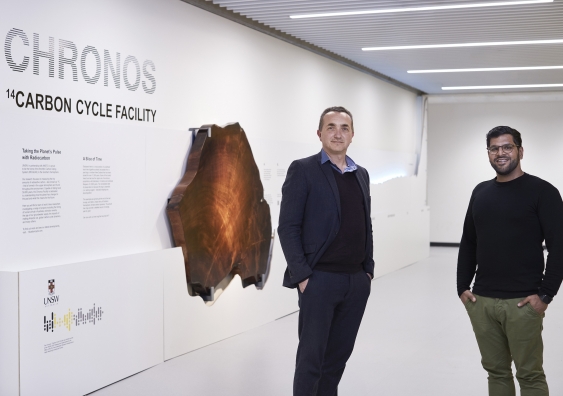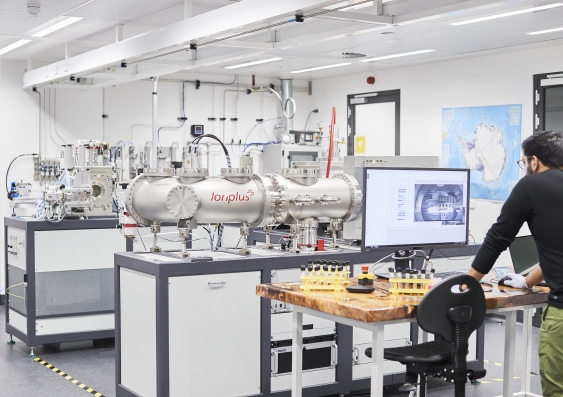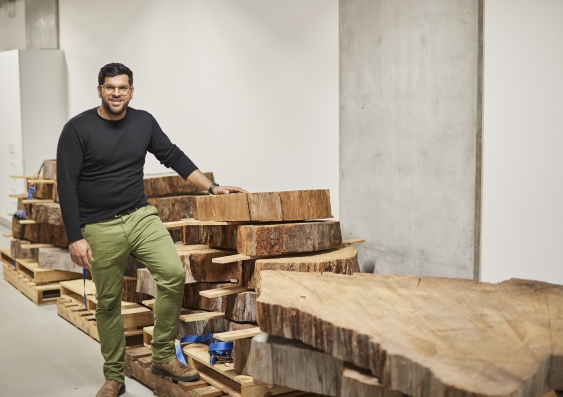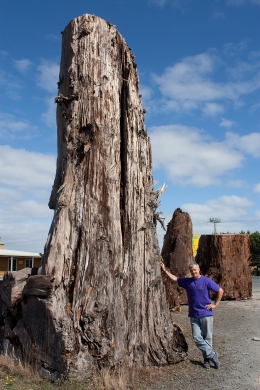Researchers unlock secrets of the past with new international carbon dating standard
Radiocarbon dating is set to become more accurate after an international team of scientists improved the technique for assessing the age of historical events and objects. The new curves will help scientists build up a more accurate picture of the past.
Three researchers at UNSW Sydney, in collaboration with international colleagues, measured 15,000 samples from objects dating back as far as 55,000 years ago, as part of a seven-year project.
They used the measurements to create new international radiocarbon calibration (IntCal) curves, which are fundamental across the scientific spectrum for accurately dating artefacts and making projections about the future.
“Radiocarbon dating has revolutionised the field of archaeology and environmental science. As we improve the calibration curve, we learn more about our history,” says Professor Paula Reimer from Queen’s University Belfast, head of the IntCal project.
“The radiocarbon calibration curves are key to helping answer big questions about the environment and our place within it.”
Radiocarbon dating is vital to fields such as archaeology and geoscience to date everything from abrupt and extreme climate change to ancient human bones.
Archaeologists can use that knowledge to correctly restore historic monuments or study the demise of the Neanderthals, while geoscientists on the Intergovernmental Panel on Climate Change (IPCC) rely on the curves to accurately find out about past climate patterns and extremes in order to better understand and prepare for the future.

Dr. Adam Sookdeo loading a magazine of samples from the 16th century into the MICADAS. Photo: Richard Freeman / UNSW.
‘Scientific workhorse’ for the community
UNSW project lead Professor Chris Turney, who contributed to the new curves along with UNSW colleagues Dr Adam Sookdeo and Dr Jonathan Palmer, says dating the past is essential for improving our understanding of how the Earth evolved and how climatic variations impacted its inhabitants, including humans.
“Radiocarbon dating has been the workhorse of archaeological and environmental science,” he says.
“We know the world faces many terrible environmental crises, but there still remains uncertainty surrounding the scale and timing of future impacts. A major reason for this is because scientific observations only go back a few hundred years at best. While the past obviously isn’t a perfect analogue for the future, the last 55,000 years provides valuable insights into the carbon cycle, abrupt and extreme shifts in climate, extinction events, and human migrations around the planet.”
Prof. Turney says analysing these key past events and processes can help us model our future.
“For example, ice core records show rapid warmings have occurred in the past over the polar regions. So one of the questions that radiocarbon can help answer is how do these changes translate to where people live today? By dating climate records preserved in lakes, peats and the oceans in lower latitudes, we can determine if any one region of the world warms earlier or faster than another, providing insights into the future.
“Radiocarbon dating helps us understand so many different aspects of the environment. This is especially important in Australia as the driest inhabited continent on the planet. For instance, as part of the ARC Centre of Excellence in Australian Biodiversity and Heritage (CABAH), we’re looking at human migration and adaption in Australia during multiyear-long droughts known as megadroughts. Working with colleagues, we’re interrogating fossil records of megafauna to try to understand when and why they went extinct. Radiocarbon dating helps the scientific community bring the timing of these different elements together, which gives us a better sense of where we might be going.”

Professor Chris Turney and Dr Adam Sookdeo with a 12,000 year old section of ancient wood at the Chronos 14Carbon-Cycle Facility, UNSW Sydney. Photo: Richard Freeman / UNSW.
Three curves, 15,000 measurements
For this update, the team of researchers developed three curves, published today in Radiocarbon: IntCal20 for objects found in the Northern Hemisphere, SHCal20 for the Southern Hemisphere, and Marine20 for the world’s oceans.
The curves are created based on collecting a huge number of archives which store past radiocarbon but can also be dated using other methods. Such archives include tree-rings from preserved logs in bogs, stalagmites found in caves, corals from the sea and cores drilled from lake and ocean sediments. In total, the new curves are based on almost 15,000 measurements of radiocarbon taken from objects as old as 55,000 years.
Previous versions of the radiocarbon calibration curve that were periodically compiled over the past 50 years were heavily reliant on measurements taken from blocks of wood containing 10 to 20 years of growth so they were big enough to be tested for radiocarbon. Advances in radiocarbon measurement mean the updated curves instead use tiny samples, such as tree-rings covering just single years, providing previously impossible precision and detail in the new calibration curves. Additionally, improvements in understanding of the carbon cycle have meant the curves have now been extended all the way to the limit of the radiocarbon technique, to 55,000 years ago.

The magazine of samples is now inside the MICADAS designed by Ionplus. Dr. Adam Sookdeo checks that all parameters of the machine are optimized before beginning 14C analysis. Photo: Richard Freeman / UNSW.
Dr Adam Sookdeo, now in Prof. Turney’s team, contributed nearly 12 per cent of all the measurements that fed into IntCal during his Ph.D. He looked at one time span from about 13,000 years ago that saw Northern Hemisphere temperatures plummet.
“My work is focused on reconstructing past climate change – through radiocarbon dating, we can figure out when these alterations happened, how long they lasted, and investigate the roles of the carbon cycle, the geomagnetic field and solar activity. This all helps us better project future climate conditions.
“For IntCal, we produced a lot of data and were able to redefine this time period really precisely, down to single years.”
For example, Dr Sookdeo analysed tree rings from ancient New Zealand kauri trees to trace changes in the carbon cycle in the southern Pacific Ocean.
“These trees are effectively photosynthesizing old carbon that’s coming up from the ocean. And so analysing them allows you to actually see changes in the rate at which old carbon dioxide is coming out of the oceans – which leads us to scary conclusion that it doesn’t take much for the southern Pacific Ocean to go from being a carbon sink to a source,” he says.

Dr. Adam Sookdeo stands in front of pieces of ancient Kauri trees that grew 12,000 years ago. They are part of a larger collection by Dr. Jonathan Palmer (not featured here). Photo: Richard Freeman / UNSW.
Measuring isotope ratios
Radiocarbon dating – first developed in 1949 – is the most frequently used approach for dating the last 55,000 years and underpins archaeological and environmental science. It depends on two isotopes of carbon called stable 12C and radioactive 14C.

Dr Jonathan Palmer standing next to a 50,000 year old kauri tree (Agathis australis), New Zealand. Photo: Supplied.
While a plant or animal is alive it takes in new carbon, so has the same ratio of these isotopes as the atmosphere at the time. But once an organism dies it stops taking in new carbon – so the stable 12C remains but the 14C decays at a known rate. By measuring the ratio of 14C to 12C left in an object, we can estimate the date of its death.
“If the level of atmospheric 14C were constant, this would be easy,” Professor Chris Turney explains.
“However, it has fluctuated significantly through the past. In order to date organisms precisely scientists need a reliable historical record of its variation to accurately transform 14C measurements into calendar ages. The new IntCal curves provide this link.”
The UNSW contribution to the research was completed at the Chronos 14Carbon-Cycle Facility that was officially opened in November 2019. The facility contains the only MIni CArbon Dating System (MICADAS) in the Southern Hemisphere.
“The UNSW Chronos facility enabled us to contribute to this key piece of research that the scientific community will rely on for years to come – and with new samples spanning periods of global environmental change, will allow us to make a major contribution to the next iteration of this international dataset too,” Prof. Turney says.
The facility gives researchers exclusive access to subfossil and living trees from remote New Zealand Subantarctic Islands, ancient bones, peat and lake archives from the Antarctic, and other ancient carbon resources.
The new curves were a collaboration between 41 institutions across 14 countries. The full papers detailing the results are available online.

